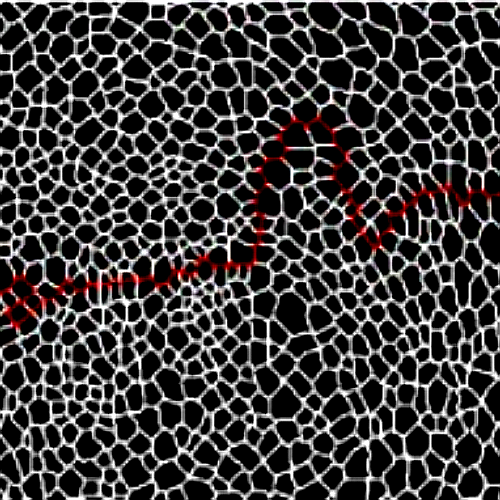The Selector Gene apterous and Notch Are Required to Locally Increase Mechanical Cell Bond Tension at the Drosophila Dorsoventral Compartment Boundary.
The separation of cells with distinct fates and functions is important for tissue and organ formation during animal development. Regions of different fates within tissues are often separated from another along straight boundaries. These compartment boundaries play a crucial role in tissue patterning and growth by stably positioning organizers. In Drosophila, the wing imaginal disc is subdivided into a dorsal and a ventral compartment. Cells of the dorsal, but not ventral, compartment express the selector gene apterous. Apterous expression sets in motion a gene regulatory cascade that leads to the activation of Notch signaling in a few cell rows on either side of the dorsoventral compartment boundary. Both Notch and apterous mutant clones disturb the separation of dorsal and ventral cells. Maintenance of the straight shape of the dorsoventral boundary involves a local increase in mechanical tension at cell bonds along the boundary. The mechanisms by which cell bond tension is locally increased however remain unknown. Here we use a combination of laser ablation of cell bonds, quantitative image analysis, and genetic mutants to show that Notch and Apterous are required to increase cell bond tension along the dorsoventral compartment boundary. Moreover, clonal expression of the Apterous target gene capricious results in cell separation and increased cell bond tension at the clone borders. Finally, using a vertex model to simulate tissue growth, we find that an increase in cell bond tension at the borders of cell clones, but not throughout the cell clone, can lead to cell separation. We conclude that Apterous and Notch maintain the characteristic straight shape of the dorsoventral compartment boundary by locally increasing cell bond tension.

- PLoS One. 2016 Aug 23;11(8):e0161668
- 2016
- Developmental Biology
- 27552097
- PubMed
Enabled by:
